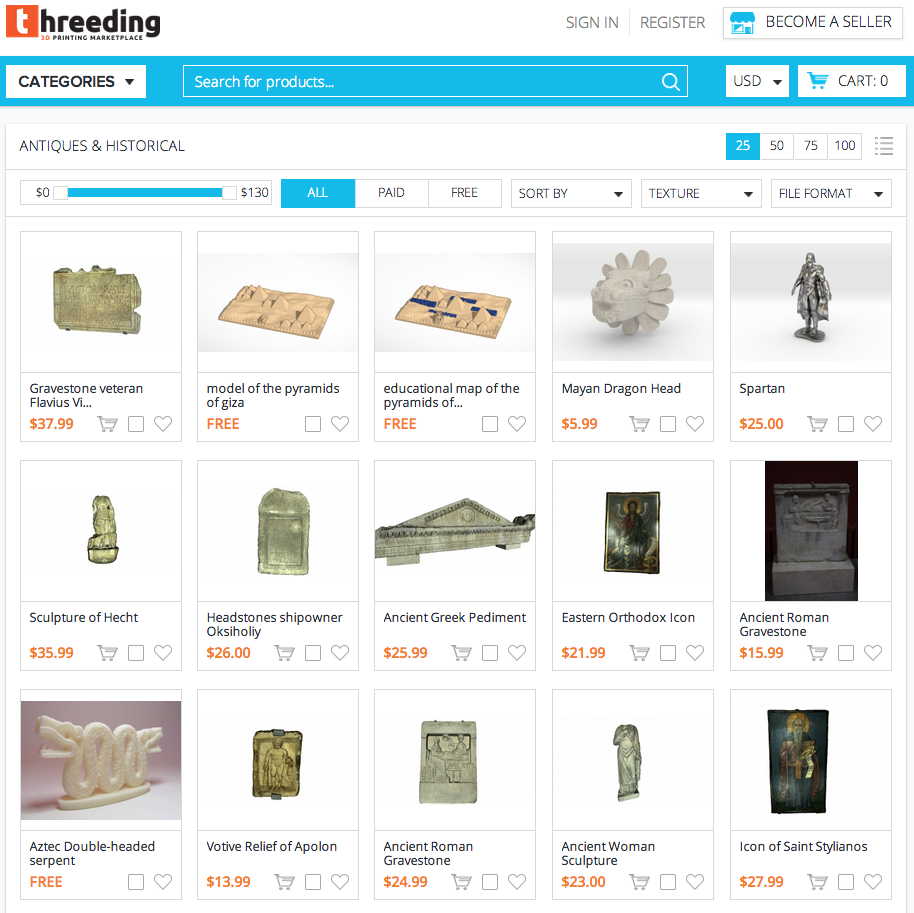3D model marketplace Threeding has announced that they will be using Artec Group’s 3D scanning technology to scan artefacts from several Central and Eastern European museums. The scanned historical artefacts will be published on Threeding’s website and made available for purchase.
The cooperation agreement between Artec and Threeding is one of the largest commercial efforts to create a library of 3D scanned objects of historical significance. The scans will be captured using Artec’s professional quality scanners and software, and converted to a 3D printing friendly format by Threeding before being added to its online model marketplace.
By allowing Threeding to sell the digital scans of their collections each museum will receive a small royalty payment for each model sold, and have free access to the library for educational or research purposes. Not only does this project help support museums, many with small or limited budgets, but it helps the greater Pan-European effort to digitally catalogue and scan artefacts important to the historical and cultural heritage of Europe.
“We are very excited about this partnership. Offering 3D printing models of historical artefacts is a key priority for us and having access to Artec’s cutting-edge 3D scanning technology will increase significantly the number of models we offer.” Said co-founder of Threeding.com, Stan Partalev. “Their 3D scanners are undisputedly the best devices for the digitalization of historical artefacts,”
Earlier in the year Threeding teamed up with the Regional Historical Museums of Varna and Pernik and scanned and catalogued over 150 relics from the museums collections. The resulting 3D models were made available for purchase on Threeding.com and the museums had a similar profit sharing deal in place. The already available models are sculptures, reliefs, Greek and Roman architectural details, tools and weapons. And now that they have higher quality Artec scanners they will be making a return visit to scan smaller objects as well as expand the number of Central and Eastern European museums who will have their collections scanned.



